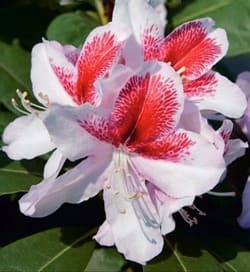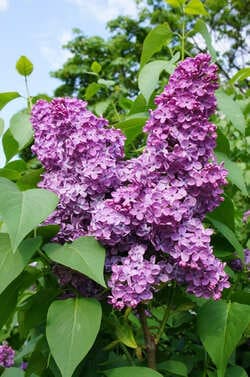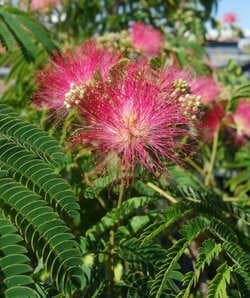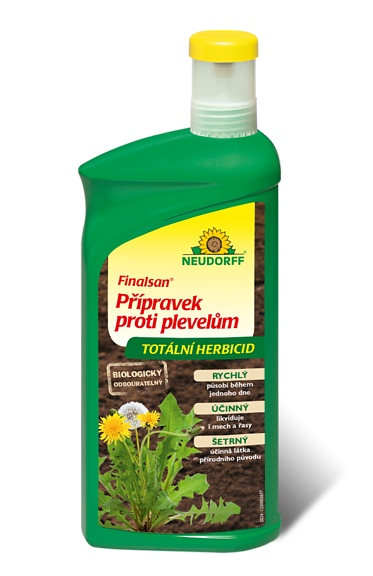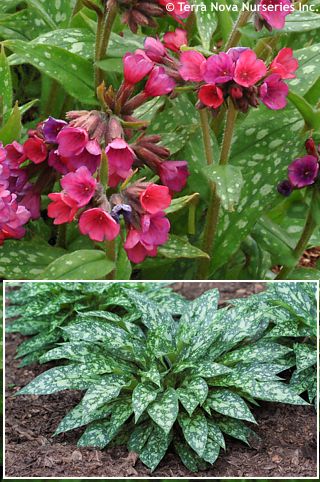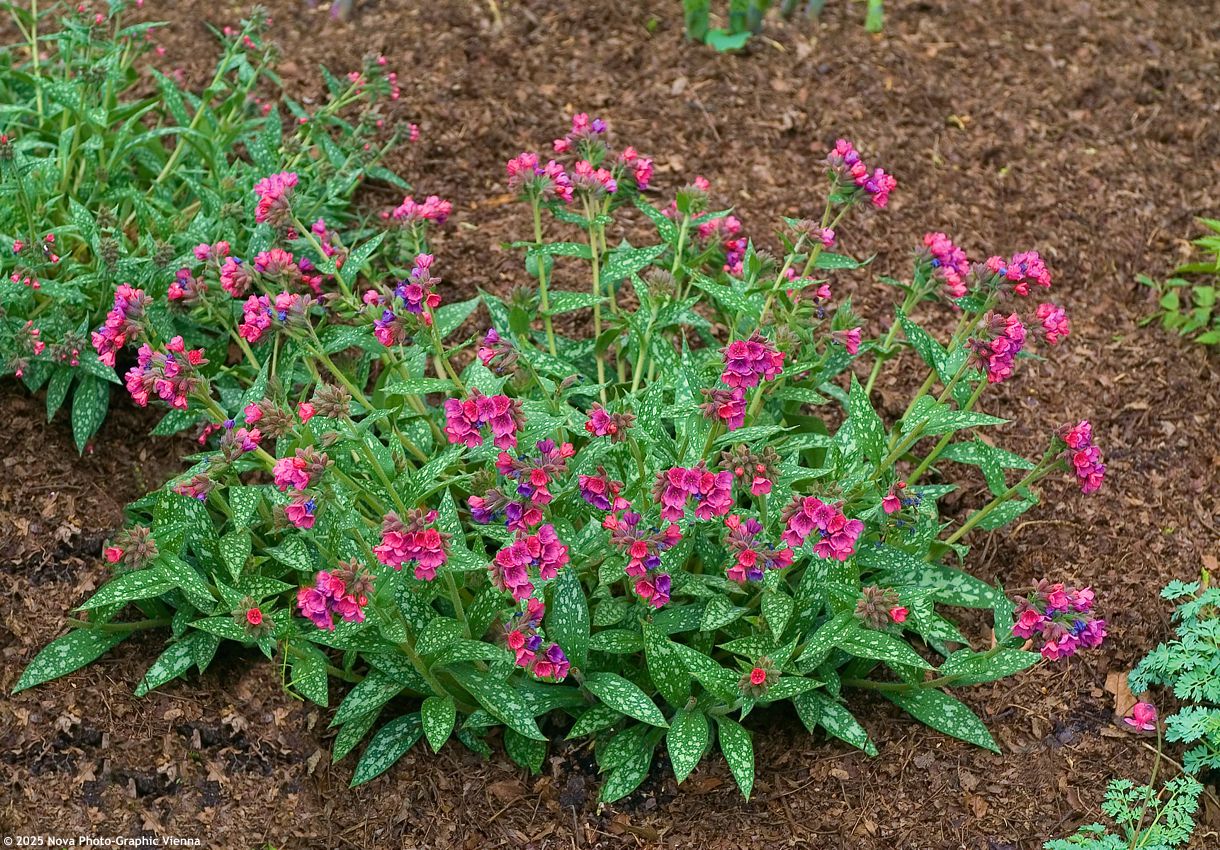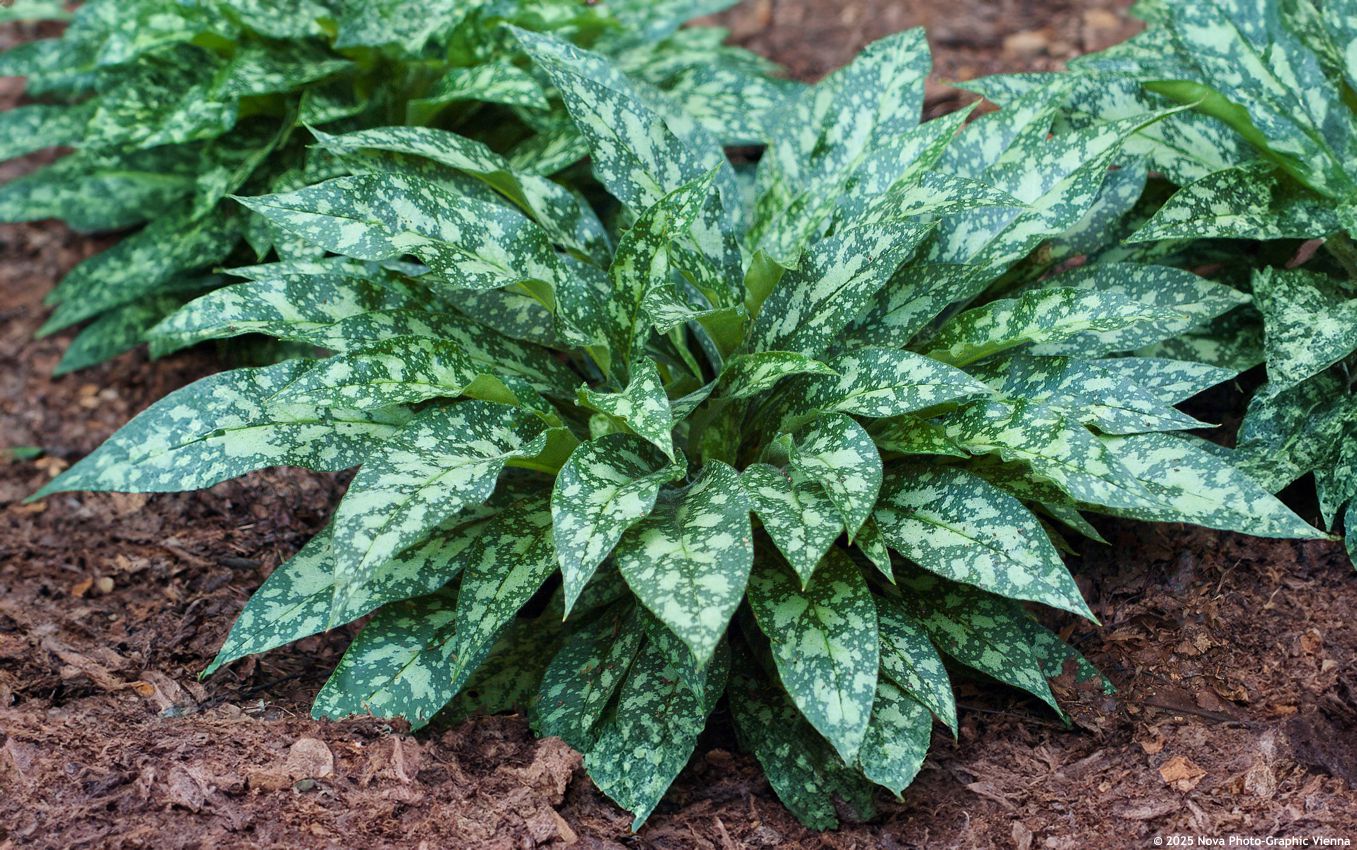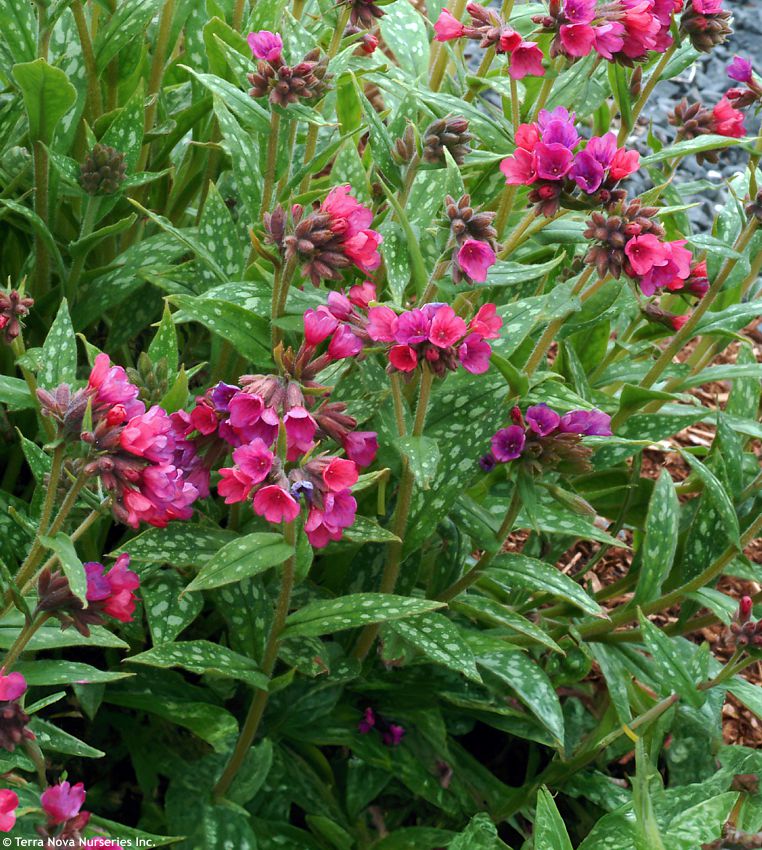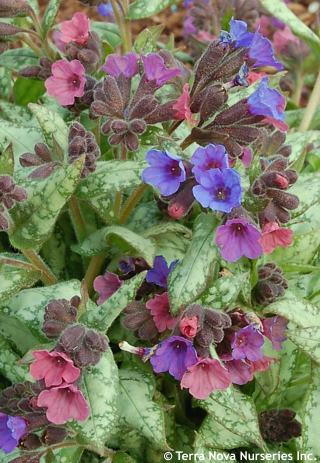Pulmonaria 'RASPBERRY SPLASH' lungwort
Pulmonaria
Lungwort is a genus of about 16 perennial species originally found in woodlands and at streamsides in Europe and Asia, and for centuries has been used as a medicinal plant. Plants are characterized by pink and blue flowers, often both colours found the same plant, while other varieties are single-coloured and flowers on some may get so pale to appear almost white. Some produce very handsome foliage of larger size and various patterns. Most species are woodland plants suitable for (part)shaded locations, some prefer full sun, and a few even tolerate short spells of drought. However, in modern horticulture, in order to achieve the best flowers as well as lush foliage, they are often hybridized with one another, so it is best to grow these hybrids preferably in woodland conditions.
Terra Nova Nurseries from Oregon, USA, boast a team of outstanding breeders who dedicate themselves to their favorite types of perennials. Their immense success lies in the fact that each team member focuses on what truly fulfills them. Thanks to this approach, the nursery proudly holds the title of the most influential leader among perennial breeders across North America. Dan M. Heims, the company's president and co-founder in 1992, has been working with perennials since 1973. Among his favorite plants are heucheras, tiarellas, and pulmonarias, of which at least six are protected by patents. In Europe, popular varieties include High Contrast, Trevi Fountain, and Moonshine. In 1999, the pink variety Raspberry Splash was added to the list, although it had to wait a bit longer to claim its spot in Europe. Fortunately, it seems that we have finally developed a taste for lungworts with other than the typical blue-violet flowers, which is great news.
Raspberry Splash lungwort stands out with its unique flower colour, which is initially vibrant raspberry pink and later transitions to purple and bluish violet. This change is caused by chemical processes in the flower cells, specifically by changes in pH, which influence pigments called anthocyanins. The flowers are small, bell-shaped, and appear at the tips of about 25 cm long, slightly arching, and sparsely leaved stems. Blooming in Central European conditions begins during the first warmer days of spring, usually in the first half of April, and lasts for about a month.
Leaves are the second, and often the more significant feature for which we purchase these hybrid lungworts. Once the plant finishes flowering, you remove the stems with spent flowers, and new leaves begin to sprout from the ground. These leaves are considerably larger compared to those present before flowering and showcase a striking transformation in colour. While earlier leaves appear subdued and less prominent, the post-flowering foliage bursts with vibrancy, featuring dark green tones accented by irregular silver-grey blotches that resemble leopard’s fur. This dramatic change highlights the plant's ornamental value, making it a centrepiece of any garden bed.
The semi-evergreen, broadly lance-shaped leaves are noticeably hirsute, adding a unique texture to their appealing look. Raspberry Splash is a hybrid variety combining two different species: Pulmonaria longifolia 'E.B. Anderson' which gives the leaves more elongated shape, and Pulmonaria saccharata 'Leopard' which contributed to the spotted pattern. The plant forms dense mounds with elegantly arranged leaves in an almost horizontal rosette owing to which it is also suitable as ground cover. Additionally, it is one of the few varieties that tolerates full sun without sun scorch. It is protected by patents PP12138 (USA – 2001) and 11545 (EU – 2003).
Large-leaved lungworts require fertile and loose soil that won't dry out often but also won't remain permanently waterlogged to avoid fungal diseases. In the wild, they grow naturally under trees that provide moisture retention in the soil and in loose, nutrient-rich soil, regardless of pH. These plants prefer partial shade or shade; in full sun, their leaves can suffer burns, except for sun-tolerant varieties. Although some leaves may remain handsome after winter, it is recommended to prune the whole clump early in spring, just above the ground level. Lungworts are hardy to about -34 °C. (USDA zone 4).
Last update 27-04-2025












